-
EXECUTIVE SUMMARY
-
MARKET INTRODUCTION
-
Definition
-
Scope of the Study
- Research Objective
- Assumptions
- Limitations
-
RESEARCH METHODOLOGY
-
Overview
-
Data Mining
-
Secondary Research
-
Primary Research
- Primary Interviews and Information Gathering Process
- Breakdown of Primary Respondents
-
Forecasting Modality
-
Market Size Estimation
- Bottom-Up Approach
- Top-Down Approach
-
Data Triangulation
-
Validation
-
MARKET DYNAMICS
-
Overview
-
Drivers
-
Restraints
-
Opportunities
-
MARKET FACTOR ANALYSIS
-
Value Chain Analysis
-
Porter’s Five Forces Analysis
- Bargaining Power of Suppliers
- Bargaining Power of Buyers
- Threat of New Entrants
- Threat of Substitutes
- Intensity of Rivalry
-
COVID-19 Impact Analysis
- Market Impact Analysis
- Regional Impact
- Opportunity and Threat Analysis
-
GLOBAL MILK TANK COOLING SYSTEM MARKET, BY TYPE
-
Overview
-
Direct Expansion System Tank
-
Ice Bank Tank
-
Others
-
GLOBAL MILK TANK COOLING SYSTEM MARKET, BY CONFIGURATION
-
Overview
-
Open milk tank
-
Fully enclosed milk tank
-
Others
-
GLOBAL MILK TANK COOLING SYSTEM MARKET, BY CLEANING
-
Overview
-
In-farm
-
In-plant
-
Others
-
GLOBAL MILK TANK COOLING SYSTEM MARKET, BY INDUSTRY VERTICAL
-
Overview
-
Food
-
FMCG
-
Cold storage
-
Others
-
GLOBAL MILK TANK COOLING SYSTEM MARKET, BY REGION
-
Overview
-
North America
- U.S.
- Canada
-
Europe
- Germany
- France
- U.K
- Italy
- Spain
- Rest of Europe
-
Asia-Pacific
- China
- India
- Japan
- South Korea
- Australia
- Rest of Asia-Pacific
-
Rest of the World
- Middle East
- Africa
- Latin America
-
COMPETITIVE LANDSCAPE
-
Overview
-
Competitive Analysis
-
Market Share Analysis
-
Major Growth Strategy in the Global Milk tank cooling system Market,
-
Competitive Benchmarking
-
Leading Players in Terms of Number of Developments in the Global Milk tank cooling system Market,
-
Key developments and Growth Strategies
- New Type Launch/Configuration Cleaning
- Merger & Acquisitions
- Joint Ventures
-
Major Players Financial Matrix
- Sales & Operating Income, 2022
- Major Players R&D Expenditure. 2022
-
COMPANY PROFILES
-
FIC SPA
- Company Overview
- Financial Overview
- Types Offered
- Key Developments
- SWOT Analysis
- Key Strategies
-
Serap Group
- Company Overview
- Financial Overview
- Types Offered
- Key Developments
- SWOT Analysis
- Key Strategies
-
MUELLER
- Company Overview
- Financial Overview
- Types Offered
- Key Developments
- SWOT Analysis
- Key Strategies
-
Milkplan
- Company Overview
- Financial Overview
- Types Offered
- Key Developments
- SWOT Analysis
- Key Strategies
-
Wedholms AB
- Company Overview
- Financial Overview
- Types Offered
- Key Developments
- SWOT Analysis
- Key Strategies
-
BOUMATIC
- Company Overview
- Financial Overview
- Types Offered
- Key Developments
- SWOT Analysis
- Key Strategies
-
RO-KA
- Company Overview
- Financial Overview
- Types Offered
- Key Developments
- SWOT Analysis
- Key Strategies
-
Packo Cooling
- Company Overview
- Financial Overview
- Types Offered
- Key Developments
- SWOT Analysis
- Key Strategies
-
GEA Group AG
- Company Overview
- Financial Overview
- Types Offered
- Key Developments
- SWOT Analysis
- Key Strategies
-
DeLaval
- Company Overview
- Financial Overview
- Types Offered
- Key Developments
- SWOT Analysis
- Key Strategies
-
Dairymaster
- Company Overview
- Financial Overview
- Types Offered
- Key Developments
- SWOT Analysis
- Key Strategies
-
Fabdec
- Company Overview
- Financial Overview
- Types Offered
- Key Developments
- SWOT Analysis
- Key Strategies
-
APPENDIX
-
References
-
Related Reports
-
-
LIST OF TABLES
-
GLOBAL MILK TANK COOLING SYSTEM MARKET, SYNOPSIS, 2018-2032
-
GLOBAL MILK TANK COOLING SYSTEM MARKET, ESTIMATES & FORECAST, 2018-2032 (USD BILLION)
-
GLOBAL MILK TANK COOLING SYSTEM MARKET, BY TYPE, 2018-2032 (USD BILLION)
-
GLOBAL MILK TANK COOLING SYSTEM MARKET, BY CONFIGURATION, 2018-2032 (USD BILLION)
-
GLOBAL MILK TANK COOLING SYSTEM MARKET, BY CLEANING, 2018-2032 (USD BILLION)
-
GLOBAL MILK TANK COOLING SYSTEM MARKET, BY INDUSTRY VERTICAL, 2018-2032 (USD BILLION)
-
NORTH AMERICA MILK TANK COOLING SYSTEM MARKET, BY TYPE, 2018-2032 (USD BILLION)
-
NORTH AMERICA MILK TANK COOLING SYSTEM MARKET, BY CONFIGURATION, 2018-2032 (USD BILLION)
-
NORTH AMERICA MILK TANK COOLING SYSTEM MARKET, BY CLEANING, 2018-2032 (USD BILLION)
-
NORTH AMERICA MILK TANK COOLING SYSTEM MARKET, BY INDUSTRY VERTICAL, 2018-2032 (USD BILLION)
-
NORTH AMERICA MILK TANK COOLING SYSTEM MARKET, BY COUNTRY, 2018-2032 (USD BILLION)
-
U.S. MILK TANK COOLING SYSTEM MARKET, BY TYPE, 2018-2032 (USD BILLION)
-
U.S. MILK TANK COOLING SYSTEM MARKET, BY CONFIGURATION, 2018-2032 (USD BILLION)
-
U.S. MILK TANK COOLING SYSTEM MARKET, BY CLEANING, 2018-2032 (USD BILLION)
-
U.S. MILK TANK COOLING SYSTEM MARKET, BY INDUSTRY VERTICAL, 2018-2032 (USD BILLION)
-
CANADA MILK TANK COOLING SYSTEM MARKET, BY TYPE, 2018-2032 (USD BILLION)
-
CANADA MILK TANK COOLING SYSTEM MARKET, BY CONFIGURATION, 2018-2032 (USD BILLION)
-
CANADA MILK TANK COOLING SYSTEM MARKET, BY CLEANING, 2018-2032 (USD BILLION)
-
CANADA MILK TANK COOLING SYSTEM MARKET, BY INDUSTRY VERTICAL, 2018-2032 (USD BILLION)
-
EUROPE MILK TANK COOLING SYSTEM MARKET, BY TYPE, 2018-2032 (USD BILLION)
-
EUROPE MILK TANK COOLING SYSTEM MARKET, BY CONFIGURATION, 2018-2032 (USD BILLION)
-
EUROPE MILK TANK COOLING SYSTEM MARKET, BY CLEANING, 2018-2032 (USD BILLION)
-
EUROPE MILK TANK COOLING SYSTEM MARKET, BY INDUSTRY VERTICAL, 2018-2032 (USD BILLION)
-
EUROPE MILK TANK COOLING SYSTEM MARKET, BY COUNTRY, 2018-2032 (USD BILLION)
-
GERMANY MILK TANK COOLING SYSTEM MARKET, BY TYPE, 2018-2032 (USD BILLION)
-
GERMANY MILK TANK COOLING SYSTEM MARKET, BY CONFIGURATION, 2018-2032 (USD BILLION)
-
GERMANY MILK TANK COOLING SYSTEM MARKET, BY CLEANING, 2018-2032 (USD BILLION)
-
GERMANY MILK TANK COOLING SYSTEM MARKET, BY INDUSTRY VERTICAL, 2018-2032 (USD BILLION)
-
FRANCE MILK TANK COOLING SYSTEM MARKET, BY TYPE, 2018-2032 (USD BILLION)
-
FRANCE MILK TANK COOLING SYSTEM MARKET, BY CONFIGURATION, 2018-2032 (USD BILLION)
-
FRANCE MILK TANK COOLING SYSTEM MARKET, BY CLEANING, 2018-2032 (USD BILLION)
-
FRANCE MILK TANK COOLING SYSTEM MARKET, BY INDUSTRY VERTICAL, 2018-2032 (USD BILLION)
-
ITALY MILK TANK COOLING SYSTEM MARKET, BY TYPE, 2018-2032 (USD BILLION)
-
ITALY MILK TANK COOLING SYSTEM MARKET, BY CONFIGURATION, 2018-2032 (USD BILLION)
-
ITALY MILK TANK COOLING SYSTEM MARKET, BY CLEANING, 2018-2032 (USD BILLION)
-
ITALY MILK TANK COOLING SYSTEM MARKET, BY INDUSTRY VERTICAL, 2018-2032 (USD BILLION)
-
SPAIN MILK TANK COOLING SYSTEM MARKET, BY TYPE, 2018-2032 (USD BILLION)
-
SPAIN MILK TANK COOLING SYSTEM MARKET, BY CONFIGURATION, 2018-2032 (USD BILLION)
-
SPAIN MILK TANK COOLING SYSTEM MARKET, BY CLEANING, 2018-2032 (USD BILLION)
-
SPAIN MILK TANK COOLING SYSTEM MARKET, BY INDUSTRY VERTICAL, 2018-2032 (USD BILLION)
-
U.K MILK TANK COOLING SYSTEM MARKET, BY TYPE, 2018-2032 (USD BILLION)
-
U.K MILK TANK COOLING SYSTEM MARKET, BY CONFIGURATION, 2018-2032 (USD BILLION)
-
U.K MILK TANK COOLING SYSTEM MARKET, BY CLEANING, 2018-2032 (USD BILLION)
-
U.K MILK TANK COOLING SYSTEM MARKET, BY INDUSTRY VERTICAL, 2018-2032 (USD BILLION)
-
REST OF EUROPE MILK TANK COOLING SYSTEM MARKET, BY TYPE, 2018-2032 (USD BILLION)
-
REST OF EUROPE MILK TANK COOLING SYSTEM MARKET, BY CONFIGURATION, 2018-2032 (USD BILLION)
-
REST OF EUROPE MILK TANK COOLING SYSTEM MARKET, BY CLEANING, 2018-2032 (USD BILLION)
-
REST OF EUROPE MILK TANK COOLING SYSTEM MARKET, BY INDUSTRY VERTICAL, 2018-2032 (USD BILLION)
-
ASIA PACIFIC MILK TANK COOLING SYSTEM MARKET, BY TYPE, 2018-2032 (USD BILLION)
-
ASIA PACIFIC MILK TANK COOLING SYSTEM MARKET, BY CONFIGURATION, 2018-2032 (USD BILLION)
-
ASIA PACIFIC MILK TANK COOLING SYSTEM MARKET, BY CLEANING, 2018-2032 (USD BILLION)
-
ASIA PACIFIC MILK TANK COOLING SYSTEM MARKET, BY INDUSTRY VERTICAL, 2018-2032 (USD BILLION)
-
ASIA PACIFIC MILK TANK COOLING SYSTEM MARKET, BY COUNTRY, 2018-2032 (USD BILLION)
-
JAPAN MILK TANK COOLING SYSTEM MARKET, BY TYPE, 2018-2032 (USD BILLION)
-
JAPAN MILK TANK COOLING SYSTEM MARKET, BY CONFIGURATION, 2018-2032 (USD BILLION)
-
JAPAN MILK TANK COOLING SYSTEM MARKET, BY CLEANING, 2018-2032 (USD BILLION)
-
JAPAN MILK TANK COOLING SYSTEM MARKET, BY INDUSTRY VERTICAL, 2018-2032 (USD BILLION)
-
CHINA MILK TANK COOLING SYSTEM MARKET, BY TYPE, 2018-2032 (USD BILLION)
-
CHINA MILK TANK COOLING SYSTEM MARKET, BY CONFIGURATION, 2018-2032 (USD BILLION)
-
CHINA MILK TANK COOLING SYSTEM MARKET, BY CLEANING, 2018-2032 (USD BILLION)
-
CHINA MILK TANK COOLING SYSTEM MARKET, BY INDUSTRY VERTICAL, 2018-2032 (USD BILLION)
-
INDIA MILK TANK COOLING SYSTEM MARKET, BY TYPE, 2018-2032 (USD BILLION)
-
INDIA MILK TANK COOLING SYSTEM MARKET, BY CONFIGURATION, 2018-2032 (USD BILLION)
-
INDIA MILK TANK COOLING SYSTEM MARKET, BY CLEANING, 2018-2032 (USD BILLION)
-
INDIA MILK TANK COOLING SYSTEM MARKET, BY INDUSTRY VERTICAL, 2018-2032 (USD BILLION)
-
AUSTRALIA MILK TANK COOLING SYSTEM MARKET, BY TYPE, 2018-2032 (USD BILLION)
-
AUSTRALIA MILK TANK COOLING SYSTEM MARKET, BY CONFIGURATION, 2018-2032 (USD BILLION)
-
AUSTRALIA MILK TANK COOLING SYSTEM MARKET, BY CLEANING, 2018-2032 (USD BILLION)
-
AUSTRALIA MILK TANK COOLING SYSTEM MARKET, BY INDUSTRY VERTICAL, 2018-2032 (USD BILLION)
-
SOUTH KOREA MILK TANK COOLING SYSTEM MARKET, BY TYPE, 2018-2032 (USD BILLION)
-
SOUTH KOREA MILK TANK COOLING SYSTEM MARKET, BY CONFIGURATION, 2018-2032 (USD BILLION)
-
SOUTH KOREA MILK TANK COOLING SYSTEM MARKET, BY CLEANING, 2018-2032 (USD BILLION)
-
SOUTH KOREA MILK TANK COOLING SYSTEM MARKET, BY INDUSTRY VERTICAL, 2018-2032 (USD BILLION)
-
REST OF ASIA-PACIFIC MILK TANK COOLING SYSTEM MARKET, BY TYPE, 2018-2032 (USD BILLION)
-
REST OF ASIA-PACIFIC MILK TANK COOLING SYSTEM MARKET, BY CONFIGURATION, 2018-2032 (USD BILLION)
-
REST OF ASIA-PACIFIC MILK TANK COOLING SYSTEM MARKET, BY CLEANING, 2018-2032 (USD BILLION)
-
REST OF ASIA-PACIFIC MILK TANK COOLING SYSTEM MARKET, BY INDUSTRY VERTICAL, 2018-2032 (USD BILLION)
-
REST OF WORLD MILK TANK COOLING SYSTEM MARKET, BY TYPE, 2018-2032 (USD BILLION)
-
REST OF WORLD MILK TANK COOLING SYSTEM MARKET, BY CONFIGURATION, 2018-2032 (USD BILLION)
-
REST OF WORLD MILK TANK COOLING SYSTEM MARKET, BY CLEANING, 2018-2032 (USD BILLION)
-
REST OF WORLD MILK TANK COOLING SYSTEM MARKET, BY INDUSTRY VERTICAL, 2018-2032 (USD BILLION)
-
REST OF WORLD MILK TANK COOLING SYSTEM MARKET, BY COUNTRY, 2018-2032 (USD BILLION)
-
MIDDLE EAST MILK TANK COOLING SYSTEM MARKET, BY TYPE, 2018-2032 (USD BILLION)
-
MIDDLE EAST MILK TANK COOLING SYSTEM MARKET, BY CONFIGURATION, 2018-2032 (USD BILLION)
-
MIDDLE EAST MILK TANK COOLING SYSTEM MARKET, BY CLEANING, 2018-2032 (USD BILLION)
-
MIDDLE EAST MILK TANK COOLING SYSTEM MARKET, BY INDUSTRY VERTICAL, 2018-2032 (USD BILLION)
-
AFRICA MILK TANK COOLING SYSTEM MARKET, BY TYPE, 2018-2032 (USD BILLION)
-
AFRICA MILK TANK COOLING SYSTEM MARKET, BY CONFIGURATION, 2018-2032 (USD BILLION)
-
AFRICA MILK TANK COOLING SYSTEM MARKET, BY CLEANING, 2018-2032 (USD BILLION)
-
AFRICA MILK TANK COOLING SYSTEM MARKET, BY INDUSTRY VERTICAL, 2018-2032 (USD BILLION)
-
LATIN AMERICA MILK TANK COOLING SYSTEM MARKET, BY TYPE, 2018-2032 (USD BILLION)
-
LATIN AMERICA MILK TANK COOLING SYSTEM MARKET, BY CONFIGURATION, 2018-2032 (USD BILLION)
-
LATIN AMERICA MILK TANK COOLING SYSTEM MARKET, BY CLEANING, 2018-2032 (USD BILLION)
-
LATIN AMERICA MILK TANK COOLING SYSTEM MARKET, BY INDUSTRY VERTICAL, 2018-2032 (USD BILLION)
-
-
LIST OF FIGURES
-
RESEARCH PROCESS
-
MARKET STRUCTURE FOR THE GLOBAL MILK TANK COOLING SYSTEM MARKET
-
MARKET DYNAMICS FOR THE GLOBAL MILK TANK COOLING SYSTEM MARKET
-
GLOBAL MILK TANK COOLING SYSTEM MARKET, SHARE (%), BY TYPE, 2022
-
GLOBAL MILK TANK COOLING SYSTEM MARKET, SHARE (%), BY CONFIGURATION, 2022
-
GLOBAL MILK TANK COOLING SYSTEM MARKET, SHARE (%), BY CLEANING, 2022
-
GLOBAL MILK TANK COOLING SYSTEM MARKET, SHARE (%), BY INDUSTRY VERTICAL, 2022
-
GLOBAL MILK TANK COOLING SYSTEM MARKET, SHARE (%), BY REGION, 2022
-
NORTH AMERICA: MILK TANK COOLING SYSTEM MARKET, SHARE (%), BY REGION, 2022
-
EUROPE: MILK TANK COOLING SYSTEM MARKET, SHARE (%), BY REGION, 2022
-
ASIA-PACIFIC: MILK TANK COOLING SYSTEM MARKET, SHARE (%), BY REGION, 2022
-
REST OF THE WORLD: MILK TANK COOLING SYSTEM MARKET, SHARE (%), BY REGION, 2022
-
GLOBAL MILK TANK COOLING SYSTEM MARKET: COMPANY SHARE ANALYSIS, 2022 (%)
-
FIC SPA: FINANCIAL OVERVIEW SNAPSHOT
-
FIC SPA: SWOT ANALYSIS
-
SERAP GROUP: FINANCIAL OVERVIEW SNAPSHOT
-
SERAP GROUP: SWOT ANALYSIS
-
MUELLER: FINANCIAL OVERVIEW SNAPSHOT
-
MUELLER: SWOT ANALYSIS
-
MILKPLAN: FINANCIAL OVERVIEW SNAPSHOT
-
MILKPLAN: SWOT ANALYSIS
-
WEDHOLMS AB.: FINANCIAL OVERVIEW SNAPSHOT
-
WEDHOLMS AB.: SWOT ANALYSIS
-
BOUMATIC: FINANCIAL OVERVIEW SNAPSHOT
-
BOUMATIC: SWOT ANALYSIS
-
RO-KA: FINANCIAL OVERVIEW SNAPSHOT
-
RO-KA: SWOT ANALYSIS
-
PACKO COOLING: FINANCIAL OVERVIEW SNAPSHOT
-
PACKO COOLING: SWOT ANALYSIS
-
GEA GROUP AG: FINANCIAL OVERVIEW SNAPSHOT
-
GEA GROUP AG: SWOT ANALYSIS
-
DELAVAL: FINANCIAL OVERVIEW SNAPSHOT
-
DELAVAL: SWOT ANALYSIS
-
DAIRYMASTER: FINANCIAL OVERVIEW SNAPSHOT
-
DAIRYMASTER: SWOT ANALYSIS
-
FABDEC: FINANCIAL OVERVIEW SNAPSHOT
-
FABDEC: SWOT ANALYSIS

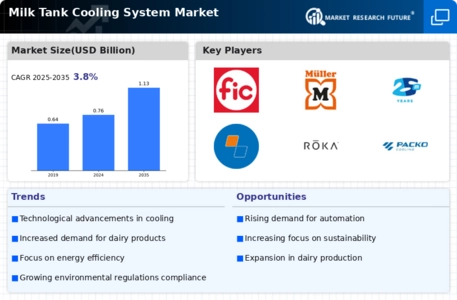
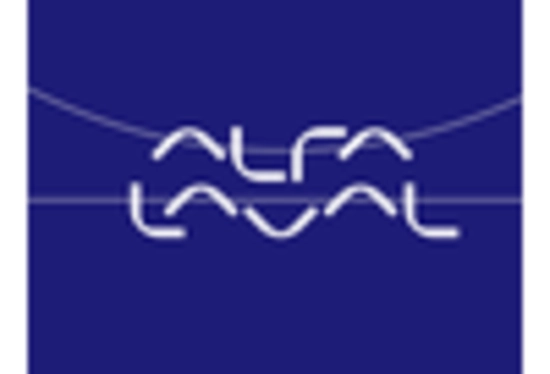
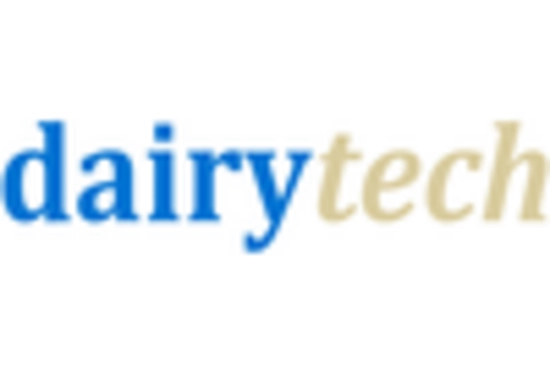

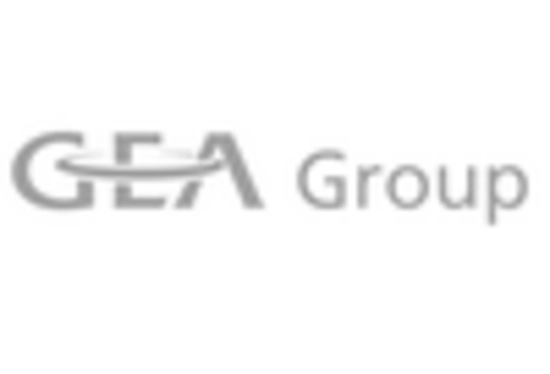
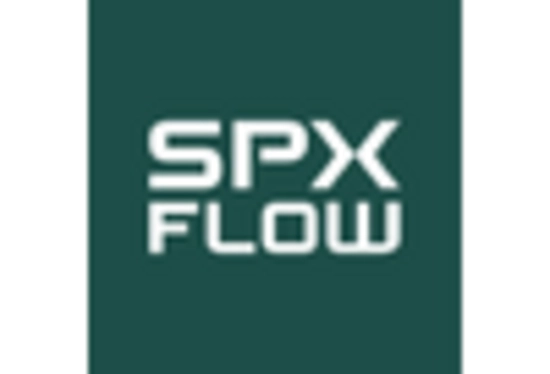
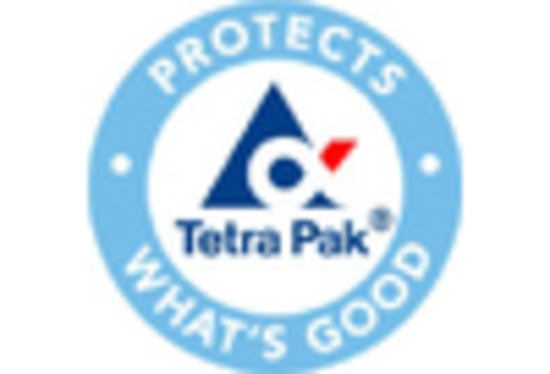

Leave a Comment